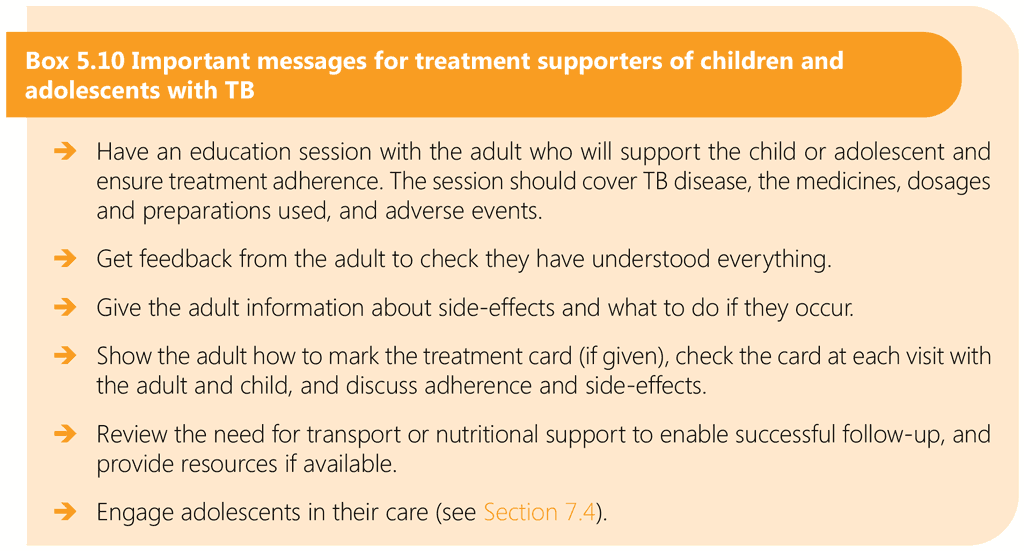Book traversal links for 5.2.11. Treatment adherence
Children and adolescents with TB, their parents, other family members and other caregivers should receive education about TB and the importance of completing treatment. Especially for younger children, the support of their parents, caregivers and immediate family is important for successful treatment. In many settings, HCWs can observe or administer treatment to children or adolescents. If this arrangement is not convenient for the patient or their family, a trained community member or CHW (preferably a person other than the child’s parent or immediate family) can help (107). Adolescents have unique adherence challenges and can benefit from age-specific tailored interventions (see Section 7.4).
The shorter 4-month treatment regimens may improve adherence by decreasing the required number of visits to health care facilities. Children and adolescents should receive TB-related care, free of charge. Child-friendly FDCs should be used to simplify administration and adherence (100).
Adherence to the full course of treatment can be a challenge in children and adolescents, especially as they may rapidly improve on treatment. Most children with TB will start to show signs of improvement after 2–4 weeks of TB treatment. Continuing treatment as prescribed until completion, even if the child or adolescent is feeling better, requires a thorough understanding of the reasons for the length of the treatment course. Using a person- and family-centred approach, and offering ongoing education to the caregiver, family and child or adolescent are important (Box 5.10) (6).

 Feedback
Feedback